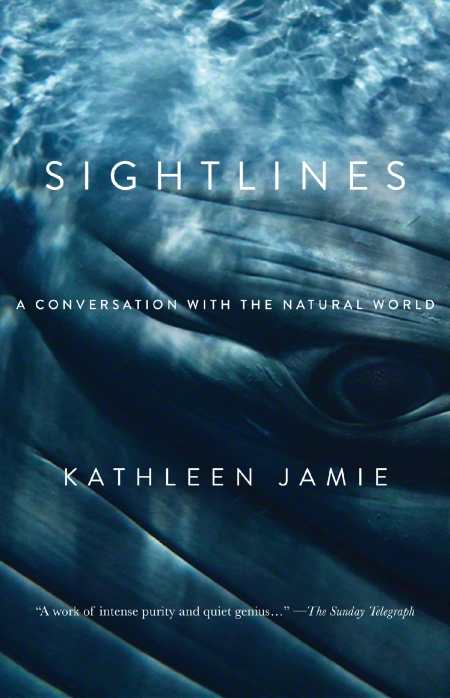Sightlines
A Conversation with the Natural World
Kathleen Jamie’s lullaby voice, smooth and gently rolling, is too enticing to set aside.
“Crawling through the ribs of a whale skeleton, peering into the grave of a Bronze-Age woman, falling to her knees in a blast of 70-mile-per-hour wind on a remote Scottish island … Jamie goes in search of nature. When a host of conference speakers urge her to ‘reconnect with nature,’ she wonders just what nature they mean. Surely the beautiful parts—majestic polar bears, shimmering aurora borealis, dainty magpie moths—but what of the unpleasant parts? ‘What are vaccinations for, if not to make a formal disconnection from some of these wondrous other species?’”
Kathleen Jamie is an award-winning poet and non-fiction writer whose work has appeared in the Guardian, the New Yorker, and Poetry, among others. Her affinity for nature and precise poet’s eye reveal the landscapes of our world in essays that are at once lyrical and engaging. As she travels around her native Scotland and beyond, she paints a vivid picture of her surroundings, pulling the reader in with descriptions like “trinkets of white ice” and engines “rusting violently.”
The book’s organization utilizes poetic juxtaposition, with an essay about the vastness of the arctic sea, icebergs gliding by under a sky illuminated with the waving green light of the aurora borealis, followed by another examining the nuclei of human cells under a pathologist’s microscope, biopsies of cancer and infection turned to landscape under high magnification. Jamie takes us from vast to minuscule, ancient to modern, light to dark, in her search for what constitutes nature. Along the way we get to know her through her wry wit and easy camaraderie with those around her.
Jamie seamlessly connects the natural world to the human existence, exposing our similarities as well as our differences. She is reminded of her days as a new mother by the sight of a cliff-side gannetry packed with nesting seabirds, and at an archaeological site she recognizes that the combination of land features that enticed Neolithic builders to erect a henge were the same ones she surveyed some 4,000 years later. Even the moon can be compared and contrasted to mankind: “During the eclipse, she’d seemed briefly to be taking on the colours of a body, but now she’s restored to herself, bright and mineral again. We’re the embodied ones, the ones of woman born, and what do we do but throw ourselves round the world in aeroplanes, railing against the constraints of earthly existence, of gravity, finitude, distance, dark.”
The essays collected here cover a wide range of experiences, but all are clearly connected by the question of what nature is and how we interact with it. The nice thing about essays is that they can be read one at a time, here and there, but Jamie’s lullaby voice, smooth and gently rolling, is too enticing to set aside easily. This is a perfect read for the hammock, under a shady tree with the natural world all around.
Reviewed by
Christine Canfield
Disclosure: This article is not an endorsement, but a review. The publisher of this book provided free copies of the book to have their book reviewed by a professional reviewer. No fee was paid by the publisher for this review. Foreword Reviews only recommends books that we love. Foreword Magazine, Inc. is disclosing this in accordance with the Federal Trade Commission’s 16 CFR, Part 255.

